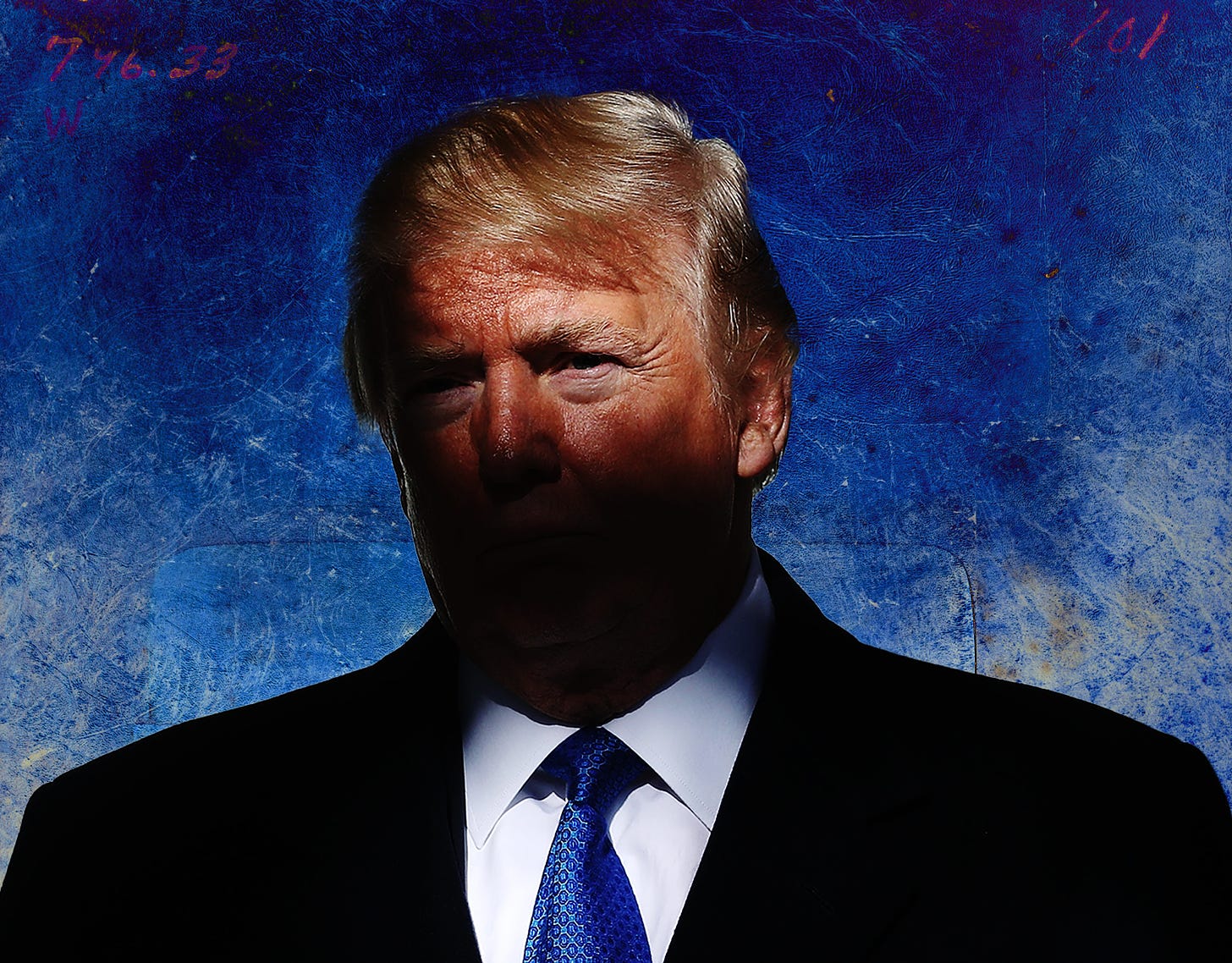Donald Trump Is America’s First Vigilante President
The consequences of a U.S. president encouraging extralegal violence.
Twice in a 24-hour period, the president of the United States took to Twitter to endorse violence. The first time, at 12:00 a.m. on Thursday, he retweeted a video in which a supporter says, “The only good Democrat is a dead Democrat.”
Then, early Friday morning, as protests over the police killing of George Floyd erupted in Minneapolis and turned violent, Donald Trump tweeted that “THUGS” were “dishonoring” Mr. Floyd’s memory. He concluded with a chilling warning: “when the looting starts, the shooting starts.”
Trump is by no means the first American president to talk tough or to threaten the use of violence. But other presidents, mindful of the chief executive’s role as the leader of the entire nation, were focused on America’s public power and its legitimate use of force.
The president’s recent tweets were just the latest example of his penchant for threatening, encouraging, or obliquely endorsing violence directed against individual political opponents and/or racial minorities.
His embrace of such violence marks such a stunning departure from the pattern of his predecessors that we might fairly regard him as America’s first vigilante president.
Throughout the 2016 campaign and since his inauguration, Donald Trump regularly has talked—sometimes with a disturbingly playful tone—about the violent things he would like to do, or the violent things he would like his supporters to do. All of it well outside the bounds of legality.
Trump has purveyed images of violence against journalists and said he would like to “punch” protesters in the face.
At a campaign rally in 2016, he instructed the crowd, “If you see somebody getting ready to throw a tomato, knock the crap out of them, would you? Seriously, OK? Just knock the hell . . . I promise you I will pay for the legal fees. I promise, I promise.”
In 2017, two days after the death of a young woman protesting against a massive white supremacist rally in Charlottesville, Virginia, Trump said, “I think there is blame on both sides. . . . But you also had people that were very fine people, on both sides.” In so doing he drew a moral equivalence between violent hate groups and their victims.
The next year, the president praised a senator who had physically assaulted a reporter, saying, “Any guy that can do a body slam, he’s my kind—he’s my guy!”
At a rally in 2019, Trump asked what could be done about immigrants crossing the border illegally. One enthusiast in the audience responded, “Shoot them.” Trump replied with a smile, “That’s only in the Panhandle can you get away with that statement.”
Later that year, Trump reminded his audience that “I have the support of the police, the support of the military, the support of the Bikers for Trump—I have the tough people, but they don’t play it tough—until they go to a certain point, and then it would be very bad, very bad.”
Such talk, with its implicit or overt threats of violence, is very much in keeping with America’s vigilante tradition, which can be traced back to the early nineteenth century and reached its heyday in the years leading up to the Civil War.
During that period vigilantism was most prominent in the West and South. In those areas, groups formed with the express intent of protecting civic values in a context where they claimed crime and vice were rampant.
Vigilantism generally has taken root in times of transition and in places with high levels of cultural diversity and institutional instability. Vigilantes attack outsiders who, in their view, do not really belong in their community.
Indeed, much as with the lynching that emerged after the Civil War, vigilantism has often been associated with protecting white American power.
From the 19th century to today, vigilantes have seen themselves as defending values and ways of life that they believe the government is not adequately protecting. And they have been willing, when necessary, to act outside the law, using violence.
Vigilantes are impatient with legal procedures and technicalities; they are ready to take justice into their own hands. Vigilante justice can be undertaken by solitary individuals or social groups. But recent cases in California, Georgia, and North Carolina show that police officers themselves sometimes aid and abet armed mobs.
President Trump has been able to tap into the vigilante tradition, drawing on both its anger and self-righteousness. After more than three years in office, he still fancies himself the outsider. That is why he continues to criticize the very government he leads and to crusade against what he portrays as a conspiracy of government officials against “the people.”
And that is why he so often encourages or praises private, illegal violence.
In this moment of intense crisis and fundamental debate over the ability of the government to protect the health and safety of Americans and to balance freedom with social responsibility, it is not surprising to see people turn to private violence.
We see it when armed groups rally to protect businesses from the “tyranny” of lockdowns, when white people in Georgia brutally kill Ahmaud Arbery, and when a Missouri legislator says that “looters should be shot but not by government. #2A.”
It is, unfortunately, also not surprising that President Trump has continued to embrace vigilantism in order to escalate the cultural war into something even more serious.
Like all vigilantes, confident in their ability to right wrongs and avenge apparent wrongdoing, the president seems oblivious or indifferent to the fact that his casual remarks and incendiary tweets are tearing this country apart and risking the welfare of all who live in the United States.



